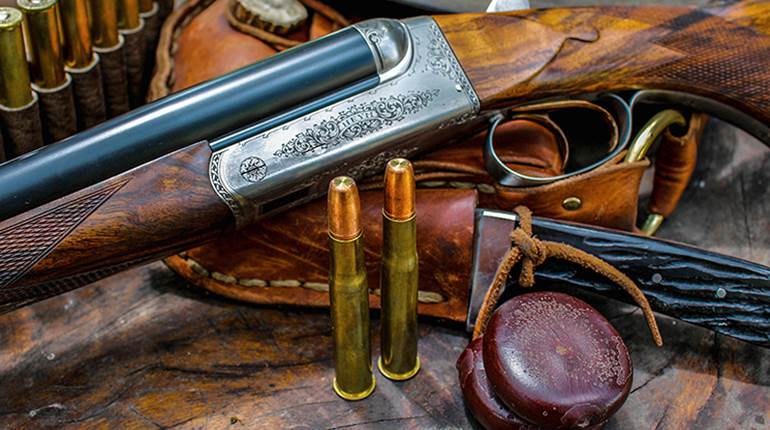Austrian gunmaker Peter Hofer is widely hailed as the finest rifle maker in the world, bar none. Ensconced in the famous village of Ferlach where gunmakers continue the medieval tradition of the guild system, Peter Hofer has created a name for himself even in this rarified air of craftsmen as the very best.
Peter Hofer rifles are known for their ingenious mechanisms—everything from diminutive .17 HMR double rifles to massive 4 bore behemoths—ornamented with gorgeous engraving. His rifles are snapped up by wealthy collectors and his clients include Saudi sheiks, Russian oligarchs, Asian billionaires and, as I saw once in his booth at the IWA show, Ugo Beretta. The late Bob Petersen, founder of Petersen Publishing and Guns & Ammo magazine, reckoned Peter Hofer is the best in the world.
At the 2010 IWA show in Germany, Peter Hofer unveiled his latest masterpiece, but it was like nothing the inventive gunmaker had ever done before. In fact, it was a startling departure from his traditional work. The rifle is called TechnicArt.
TechnicArt is a marvel of technology, which was Peter’s stated intent—showcasing a rifle as advanced as the latest NASA rocket. The gun is a double rifle (of course) chambered in .375 H&H but that’s where the tradition stops and the technology takes over.
Like a skeleton watch with a sapphire crystal see-through back, the TechnicArt rifle has sapphire crystal sideplates so you can see the intricate lockwork. Some of the lock work parts are made of solid rose gold. There are over 300 minuscule screws, some as tiny as 0.01 inches (0.3mm). Even such small screws are accented with an initial “H” on their tiny heads.
Having proved his prowess at traditional gunmaking by crafting this gold-and-steel action from scratch—the “art” in TechnicArt—Hofer focused next on the technology part.
The rifle is embedded with a programmable microprocessor that includes:
• an altimeter
• a rangefinder
• a digital compass
• a shot counter
• a thermometer
• a clock
• a barometer
• an emergency locator transponder
• a theft alarm
• a satellite GPS
This latter function, the GPS, is one that deserves elaboration. The rifle is equipped with an accelerometer, like an iPhone, so it can sense when it’s moved. You can “lock” your TechnicArt rifle by sending it a signal from your computer or, yes, even your iPhone. Once “locked,” if the rifle is so much as moved an inch, it activates the GPS and the rifle can be tracked in case of theft or unauthorized use.
A hunter can alsoprogram into the TechnicArt rifle predetermined GPS points of his campsite or likely locations for game and literally “follow” his rifle when in the field.
I didn’t ask Peter how much the TechnicArt rifle costs, and neither should you. Let’s just say that Peter Hofer rifles have not been unknown to command seven-figures.
You can see more of Peter’s breath-taking work at Hoferwaffen.com.





































